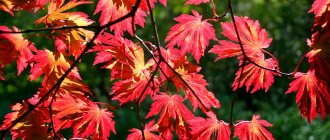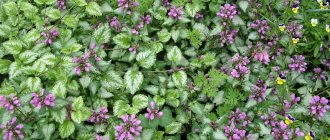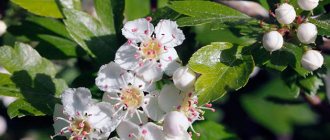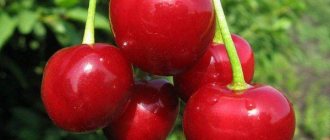If the area allows and there is a desire, then a Canadian maple planted on the site will delight the eye with its beauty and grandeur. Its homeland is Canada, which is why a leaf of the tree is depicted on the country’s national flag. Maple is widespread throughout North America.
Canadian maple - characteristics
The decorative Canadian maple plant or its full-growth relative has several distinctive characteristics:
- The bark of the tree is light brown, but it darkens over time.
- The crown of the Canadian maple is dense, spreading and of impressive volume.
- The roots are branched and penetrate very deep into the soil.
- The leaves can reach 22 cm in width. They consist of several blades with sharp and jagged ends. The green light in autumn gives way to bright scarlet with green and yellow flecks.
- It blooms in clusters of flowers arranged in beautiful clusters. Often, the way a Canadian maple blooms and the color of its leaves in the fall are the main reasons why it is planted on a property.
- The fruits of the plant look like two wings connected to each other. Each half contains a seed.
Varieties of Canadian maple
Among the common varieties of this majestic plant, several of the most striking ones can be distinguished.
- Red Canadian maple
. The tree received this name because of the color of the leaves, which have a reddish tint. The flowers of the plant are collected in inflorescences, the crown is pyramidal or oval. - Maple Laciniatum Vieri
. A relatively low representative, reaching 15 m in height. The young leaves are of an unusual pink hue, and the crown is asymmetrical. - Adirondack
. A tree with a wide crown reaching a height of 20 m. - Pyramid
. 20-meter handsome with a dense oval crown. The peculiarity of the variety is the bark of gray color, covered with grooves. - Canadian silver maple
. One of the most unusual and vibrant varieties. Its leaves are green on top and have a velvety texture and a pleasant silvery tint underneath. - Freeman Autumn Blaze
. This is a hybrid variety of red and Canadian maple, taking on all the characteristics of these species.
Description
This tree spread from North America. Its Latin name is Acer rubrum, where acer means sharp, wedge-shaped. Belongs to the deciduous family, it can grow up to 28 meters in height, the trunk width in diameter reaches about one and a half meters. The shape of the crown is tent-shaped (like mushroom caps) - sometimes oval.
The serrated leaves have a greenish color on the outside in summer and a whitish tint on the back. In autumn, red maples release substances such as anthocyanins and carotenoids, these pigments give color (warm shades of red and yellow) to the tree's foliage. The bark is gray-brown and sometimes light silver in color. Maple is beautiful not only in autumn: its picturesque red flowers bloom in May.
Maple has spread widely in Canada, the USA, Russia, Japan and other countries. It easily adapts to different natural conditions: it grows in both swampy and dry soil. He is not afraid of the conditions of a big city. Decorative species are often used in landscape design: entire alleys are planted from maple, gardens and bonsai are created.
About 20 species of this wonderful plant grow in our country (the total population numbers 150-160 varieties). Four of them are found in European Russia, the rest in the Far East and the Caucasus, and among them is the Acer japonicum variety, which is endangered.
Maple tolerates the northern climate of Russia well, although severe and prolonged cold (below -20 degrees) is contraindicated for it. Prefers partial shade to direct sunlight and does not like strong humidity.
How to plant Canadian maple?
Planting a Canadian maple is not difficult and does not require any skills. The algorithm of actions is simple:
- It is better to plant in spring or early autumn.
- Prepare holes with a diameter of 50 cm.
- Place the seedling in the hole so that the trunk is immersed in the ground no deeper than 5 cm.
- If several trees are planted, then the optimal distance between them is at least 2 m.
- Water the seedlings abundantly, pouring at least 15 liters of water under each one.
Landing
Almost any soil is suitable for growing red maple. Both black soil in the south of Russia and loam in the Moscow region are suitable. Almost all of the above species tolerate the winter season well. The planting site should be chosen in a semi-shaded area of the garden; it should be quiet: decorative maples, although hardy, do not like the wind.
It is better to plant maple in mid-spring. If you plan to plant more than one seedling, then the distance between the holes should be at least 1.5 m. The depth of the hole is usually no more than 70 cm, but it is worth keeping an eye on the root collar of the plant (this is the place where the roots go into the trunk). It should be level with the ground. If the neck comes out of the ground too much (more than 5 cm), the roots of the tree may dry out.
If the maple is planted in a damp place (high groundwater level), then drainage must be done, otherwise the tree will rot. After all the preparations, the seedling is immersed in a hole, a mixture of humus and peat is added and about 20 liters of water are poured.
Canadian maple - care
If you know the rules on how to grow a Canadian maple, the tree will delight you with its beauty for a long time and provide shade on hot summer days. The main points for caring for the plant are watering and fertilizing, taking care of the plant in preparation for wintering.
- The plant does not like stagnation of water at the root, so you should take care that there are no depressions in the root area.
- In summer, it is recommended to water the maple twice a week, and in extreme heat it can be watered more often. In spring and autumn, once a week is enough.
- After watering, it is worth weeding the soil to remove weeds and loosen the soil.
- If the plant is young, it is recommended to cover it with spruce branches or similar covering materials for the winter.
- Fertilizing twice a year is necessary if the tree grows in poor soil; in the case of fertile soil, you can apply fertilizer once a year. Nitrogen, phosphate and potassium additives are used.
Canadian maple pruning
When growing Canadian maple, the formation of the crown is an important point if you want to increase the decorativeness of the plant. It is imperative to carry out regular sanitary pruning, because the tree is often bothered by coral spotting. Sick, dry and weak branches are recommended to be pruned regularly. As for the formation of the crown, there are no special rules; everyone can form the crown of a tree in accordance with personal preferences.
Growing conditions
The culture is considered one of the most unpretentious. Therefore, caring for maple will not be difficult. Maple prefers to grow in a spacious sunny area, however, it feels great in partial shade and in shaded areas of the garden.
This is a frost-resistant plant; maple can tolerate frost up to 40 degrees. This factor allows it to be cultivated in any climate zone of our country, with the exception of zones beyond the Arctic Circle.
The main factor that gardeners should pay attention to is shape. Crown formation is the main task. To achieve this goal, the following conditions must be met:
- Annual seedlings are planted in the ground. However, young shoots grow in home or greenhouse conditions. An important point is gradual preparation for landing on the street. This will harden the plant so that the roots do not freeze in winter and the branches do not dry out in the heat.
- Canadian maple has rather fragile branches, so it is preferable to plant it in places protected from the wind.
- Despite the fact that maple is a moisture-loving tree, it is worth paying attention to soil drainage. Stagnation of moisture can lead to rotting of the rhizome and subsequent disease and death of the entire tree.
- It is recommended to wrap young trees in winter to prevent the roots from freezing.
- Canadian maple seedlings are fed with mineral fertilizers and the plants are also provided with regular watering. Stronger plants are watered only on dry days.
Canadian maple propagates not only by seeds, but also by cuttings. In some cases, reproduction by shoots is possible. However, the most effective way is considered to be sowing seedlings (seedlings).
Canadian maple on a trunk
The Canadian maple tree on the site is often used for decorative purposes, as part of landscape design, so standard versions of the plant are especially popular in such cases. This tree grows up to three meters in height and has a dense spherical crown. Growing such a maple on your own is very difficult and troublesome, so the best solution would be to buy a seedling from a nursery that provides a guarantee on its product.
How does Canadian maple reproduce?
The tree propagates very well by seeds, cuttings, root and aerial layering. There are no particular difficulties in these processes, but it is worth considering each of them in more detail.
- Propagation of Canadian maple by cuttings
. This option is not the most successful, because the survival rate of cuttings is not very high. The branches are cut into cuttings and planted in nutrient soil until roots form. - Offspring
. Some species of Canadian maple produce many shoots from the root, which can be successfully used for propagation. - Seeds
. This option is simple, fast and affordable. Seeds are sown in a separate bed in the fall so that they undergo natural stratification. You can sow them in March. The germination rate of Canadian maple seeds is very good. - Using air layering
. This is a very interesting method and effective. They take a branch or scion, cut the bark, treat the cut with a root and insert a clean pebble or foam ball into the cut so that the edges of the branch do not grow together. Wrap the cut area with damp sphagnum moss and cover it with polyethylene. The next task is to prevent the branch from drying out, so you need to carefully wrap it in foil, canvas or similar material. Over time, roots will develop at the cut sites. Layers can be planted next spring along with moss. - Root layering
. This method is similar to the previous one, the only difference is that the cut branch is sprinkled with earth, having first pinned it to the ground.
Canadian maple diseases
The Canadian maple tree is susceptible to various diseases, but to a greater extent, its leaves. Pests also often choose this majestic tree as their home. Problems discovered in time are much easier to solve than neglected ones, so at the slightest suspicion of an illness, you should immediately take all measures to treat it. Among the most common diseases of Canadian maple you can find:
- Leaf spotting
. Spots appear on the leaves of the plant, which subsequently tear. For prevention, you need to carefully remove leaves, especially infected ones. If the plant is seriously ill, then it is worth treating it with Abiga-Pik fungicides or Bordeaux mixture. - Tar spotting
. Spots on yellow leaves turn black over time and become resinous. For prevention, the plant must be thinned regularly so that the maple receives the right amount of light and air. - Verticillium wilt
. With this disease, leaves on individual branches are damaged. They need to be destroyed. - Coral spotting
. This mushroom looks like the head of a pin. It affects tissues, penetrating deep. To treat the disease, all branches on which it is found are removed, and the cut sites are treated with garden varnish. For prevention, the plant should be treated in the fall and spring with preparations containing copper. - Powdery mildew
. The characteristic powdery coating on the plant indicates this disease. It is better to choose maple varieties that are resistant to powdery mildew, but if the disease is detected on the plant, you can treat it with fungicides.
The most common pests are:
- Aphid
. The buds and leaves of the plant curl, and sometimes the sticky secretions of these insects are even visible. In case of mild infestation, pests are washed off with a soap solution, and in case of significant infestation, they are sprayed with the following preparations: “Commander”, “Fitoverm”, “Tobacco Dust” and other analogues. - Spider mite
. First, red or yellow specks appear on the leaves, in place of which necrotic areas subsequently form. When infected, the plant is recommended to be treated with the following preparations: “Molniya”, “Karbofos”, “Akarin”, “Aktellik” and others. - Gall mites
. These are growths that cause the plant to lose its decorative properties. To get rid of pests, you need to carefully treat it with fungicides.
Canadian maple in landscape design
The Canadian maple plant can often be found in suburban and home gardens. This is due to its high decorative value and harmonious combination with other plants. The most important advantage of the Canadian maple is its autumn leaf color, which differs depending on the variety. Fiery red, yellow and orange leaves look very beautiful against the background of other greenery. There is only one drawback to using this tree for landscaping - only those who have enough space to plant this large plant can afford it.
Usage
Canadian maple wood is strong, hard and heavy. Used to make furniture, cladding, parquet and single-ply plywood.
It is also used to make gun stocks, door handles, plywood dies, bowling pins and musical instruments.
Sugar maple (Canadian) is widely used to make maple syrup. The tree is cut and the sap is collected, which is then boiled to produce maple syrup, sugar or sweets.
The maple syrup industry generated more than $100 million in revenue in 1989.
Maple syrup
Sugar maple is often planted as ornamental plants in parks and along roads. Sometimes maple plantings create a forest protection belt along roads from wind and snow.
The disadvantages of this tree are its susceptibility to strong winds, freezing rain and winter frosts. Anti-icing salt often damages maples growing along highways.
How to get rid of Canadian maple?
Tall tree species may be unsafe for outbuildings and houses growing in close proximity. Maple wood is fragile, so it is not uncommon for branches to break off. If such a danger exists, then it is worth knowing how to remove the Canadian maple from the site. There are three main ways to eradicate this plant:
- Mechanical
. This method involves cutting down a tree and then removing its roots. - Agrotechnical
. Using mulching, the root's access to air is blocked, which leads to its drying out. - Chemical
. A good remedy for Canadian maple is the Roundup herbicide, which is used to treat shoots, young trees or stumps.
Useful properties
The photo shows very clearly how beautiful the Canadian maple is. No wonder it is so valued in the USA and Canada. Maple syrup is very sweet and can be included in a variety of dishes. The seeds and juice of this plant have medicinal properties. The juice contains vitamin C, so it can quickly relieve colds. A medicine made from leaves that dissolves stones in the urinary and gall bladder. So Canadian maple can rightfully be considered a cure for all diseases, and also incredibly tasty. Maple sap is sweeter than birch sap. So it’s not for nothing that Canadians decorated their national flag with a sugar maple leaf.
This tree has valuable wood that makes excellent furniture, housewares and sports equipment. Wood is difficult to damage and is stable. But dense wood is difficult to process. Maple wood has a very beautiful pattern with numerous rays. It can be used to make parquet or any other flooring. Even in the manufacture of musical instruments, maple wood is widely used.
It is not at all necessary to use only fruit-bearing tree species to design a plot. Canadian maple looks very impressive at any time of the year. He has taken root remarkably well in Europe. It can rightfully be considered the most beautiful deciduous tree.
A maple grown using the bonsai technique will serve as a wonderful decoration in the house. In March, the seeds are placed in damp sand for 3 days. Plant seeds in a greenhouse. They grow there for 2-3 years.
In the sultry heat, everyone dreams of sheltering under the lush crown of such a tree. Maple will gladly accept you into its lush and strong embrace. The original shape of the crown, bright leaves, interesting fruits - all these are good reasons to place such a beauty on your property. This tree is an excellent honey plant. You can use it as a hedge. Many people note the positive energy of this tree. Therefore, we recommend that you definitely have some wooden products made from Canadian maple at home.











